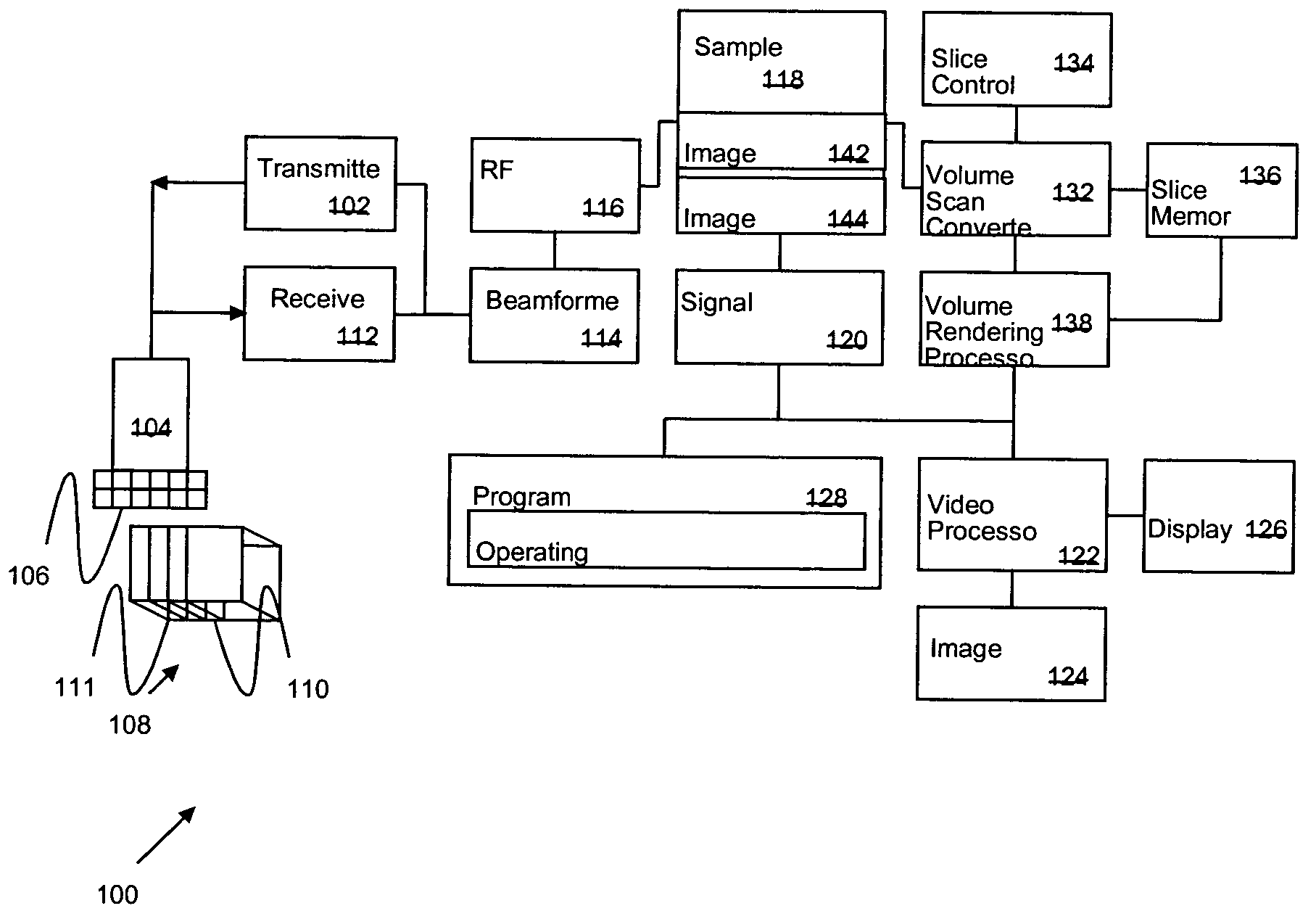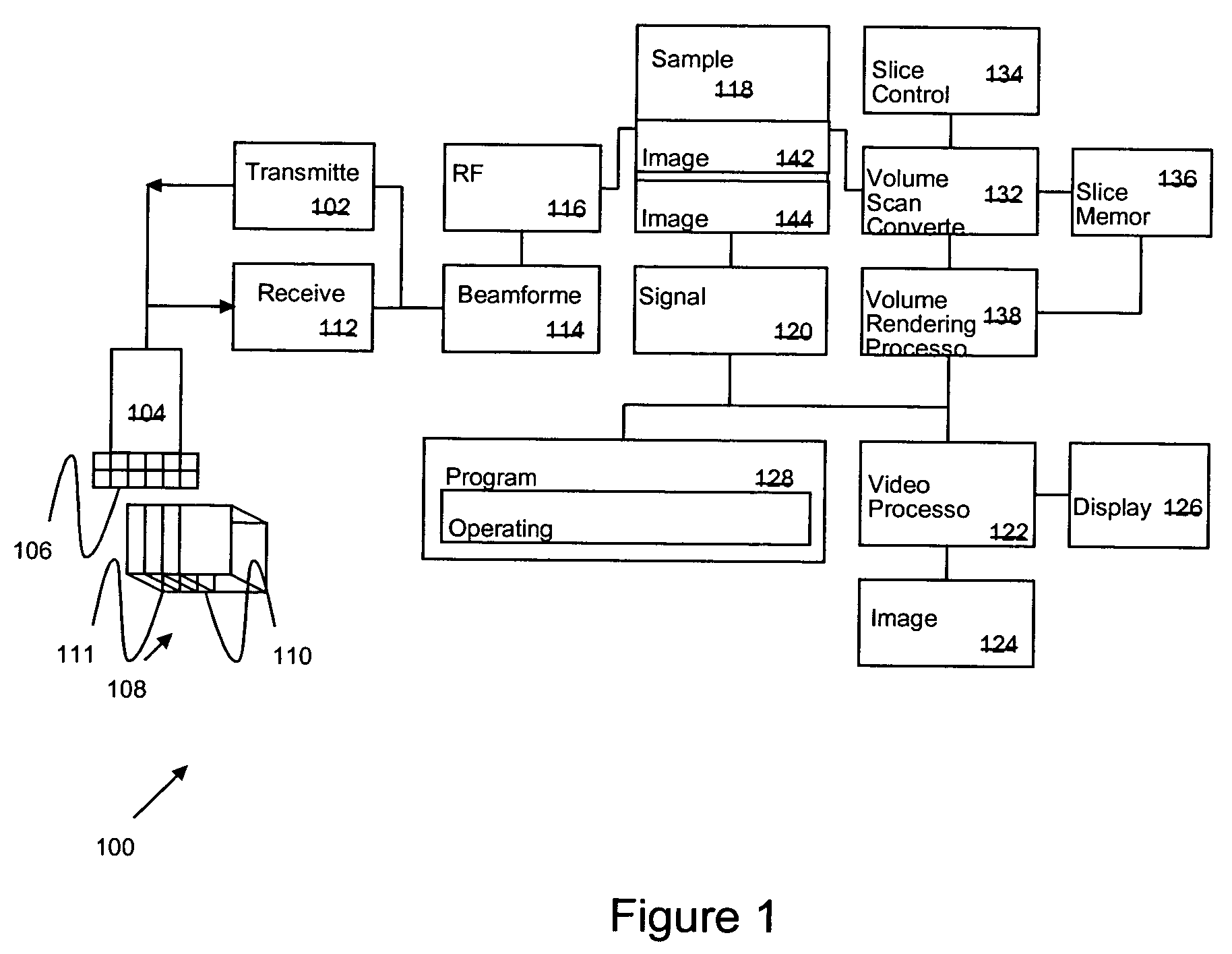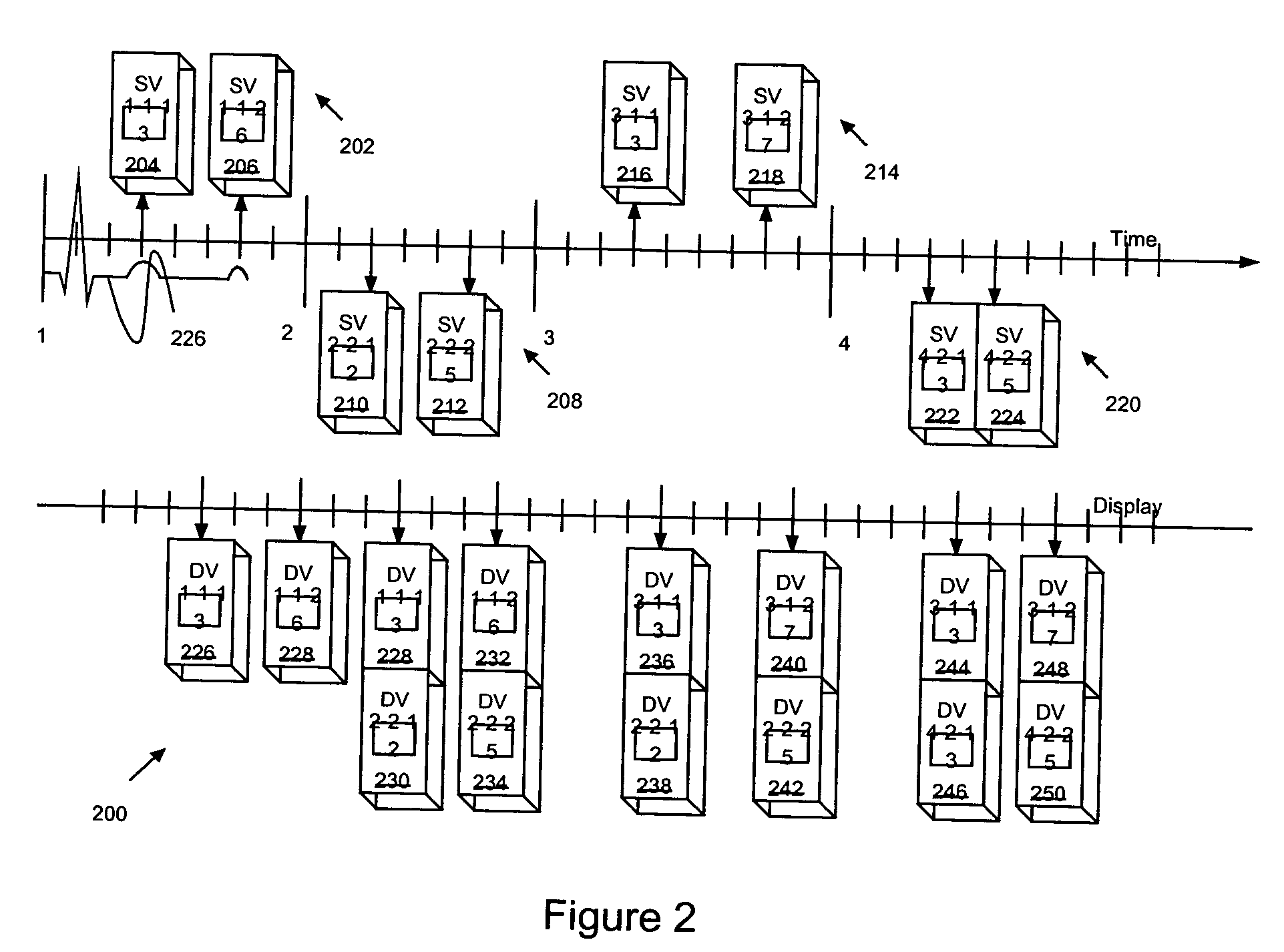Methods and systems for medical imaging
a medical imaging and system technology, applied in the field of medical imaging systems, can solve the problems of slow ultrasound system obtained and display of three-dimensional volume, limited time and space presentation of such images, and inability to display
- Summary
- Abstract
- Description
- Claims
- Application Information
AI Technical Summary
Benefits of technology
Problems solved by technology
Method used
Image
Examples
Embodiment Construction
[0016] Before turning in detail to the image display and acquisition techniques and systems, an exemplary ultrasound imaging system suitable for using the techniques is summarized with reference to FIG. 1. The invention is not limited to use with ultrasound systems, however, and may instead find use in a wide variety of imaging systems in which physiologic structure is displayed, including X-ray systems, fluoroscopic systems, and so forth.
[0017]FIG. 1 illustrates a diagram of the functional blocks of an ultrasound system 100. The functional blocks are not necessarily indicative of the division between hardware circuitry. Thus, for example, one or more of the functional blocks (e.g., processors or memories) may be implemented in a single piece of hardware (e.g., a general purpose signal processor or a block or random access memory, hard disk, and so forth). Similarly, the programs may be separate stand alone programs or routines in a single program, may be incorporated as functions ...
PUM
 Login to View More
Login to View More Abstract
Description
Claims
Application Information
 Login to View More
Login to View More - R&D
- Intellectual Property
- Life Sciences
- Materials
- Tech Scout
- Unparalleled Data Quality
- Higher Quality Content
- 60% Fewer Hallucinations
Browse by: Latest US Patents, China's latest patents, Technical Efficacy Thesaurus, Application Domain, Technology Topic, Popular Technical Reports.
© 2025 PatSnap. All rights reserved.Legal|Privacy policy|Modern Slavery Act Transparency Statement|Sitemap|About US| Contact US: help@patsnap.com



